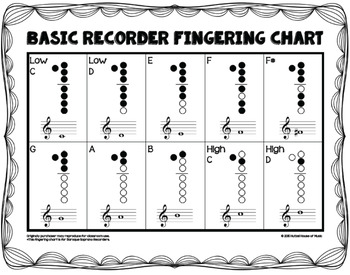

Tsukumoto (1975) built side-mounted bell-keyed recorders with a lengthened foot which obviates the closure of the bell opening itself. Also in 1958, William (not John) Koch of Haverhill, New Hampshire, USA, was using a bell key to obtain additional notes on his bass recorder (Waitzman 1968, 1969). The left-hand little finger depressed a lever to pull a wire which passed through the bell of the foot joint to pull a key against the hole. In 1958, Edgar Hunt constructed an experimental long bell key, operated by the little finger of the left hand, like the long F key of the 18th-century keyed flute and modern oboe ( Hunt 1961, Waitzman 1968).

Later, a key was designed by Dolmetsch which covered the bell opening itself and which could be operated by the little finger of the lower hand or, more usefully, by that of the upper hand.īell key, by Peter Worrell (for Dolmetsch) A less successful Carl Dolmetsch invention was a similar side-mounted closed key operated by the little finger of the uppermost hand which made possible a tongued f#”’, the subject of British Patent #852164, also granted on 8th June 1959 (Thomas 1988).

This side-mounted key was the subject of British Patent #852165, 8th June 1959, based on a 1958 application, although the text of the patent application also mentions the alternative strategy of closing or partially closing the bell opening itself ( Thomas 1998, Madgwick and Loretto 1996, Loretto 1998). A bell key designed by Carl Dolmetsch in 1957, and first used by him publicly in 1958, involved plugging the bell opening itself and letting a new hole in the side of the foot which was covered by a key operated by the little finger of the lower hand. Juritz, a physics lecturer and bassoonist in Cape Town, whose invention was not patented ( Waitzman 1968, Thomas 1998). In the absence of a bell key, it is hard to do unless the player is seated. A bell key as such was probably first made in 1953 by John W.F. End-stopping of the bell of the recorder had been mentioned by Agricola (1529) and Cardano (1546), so there are historical precedents for its use. The use of extension keys would be introduced yet again by Joachim Paetzold (1966) and Maarten Helder (1996) and then transferred to the Mollenhauer-Paetzold Tarasov recorder and, more recently, to the Breukink-Bollinger “Eagle” recorder which we will meet below.Įarly 20th-century innovations include the addition of a key applied to an otherwise more or less conventional recorder to close the bell of the recorder in order to facilitate the production of certain high notes and to adjust the tuning of others (see Fingering the Recorder). by Hans Rauch von Schrattenbach and by members of the Bassano family, though this might not have been known in the 1930s. However, downward extensions to the recorder’s range were explored in the 16th century, e.g. The impetus for this came from modern reed instruments, all of which are equipped with downward extensions below the fundamental. This new key operated by the little finger of the uppermost (left) hand and it also made an easy speaking low c#’ possible. In 1936, the Gustav Herrnsdorf firm acquired the right to protection of a c”-recorder with a b♭’ key, (D.R.G.M. 1960) with 6 semitone keys (auctioned on eBay, 2007) Soprano recorder in c” by Johannes Adler (c. The German firm Johannes Adler made keyed recorders in c” as late as the 1960s. Soprano recorder in c” with 6 semitone keys by Max Hüller, c. 1930, several workshops started to offer recorders with between three and six semitone keys, among them German instrument-makers Oscar Adler, Max Hüller, Ludwig Schlosser, Martin Kehr, and Karl Hammerschmidt & Söhne. Peter Thalheimer (2013: 28-29) has described how, as the early twentieth-century revival of the recorder gained momentum, flautists who began to play the recorder wanted to have an instrument fitted with the familiar keys rather than having to get used to historical forked fingerings. Wiener csakan in c” by an unknown maker, Johann Ziegler model A smaller version in c” was being made in the Vogtland region as late as c. Csakans were mainly built in Vienna and Pressburg (modern-day Bratislava) between 18. KeyworkĪs early as 1636 Marin Mersenne (a French polymath, whose works touched a wide variety of fields) advocated the use of extra chromatic keys on recorders (see Schmidt 1959: 25), a suggestion not explored until the 19th century with the development of what later became the Wiener csakan in about 1820, a recorder in a♭’ with a thumb hole and seven tone-holes, originally with one key, later with up to 11 keys, culminating in the development of the Komplizierte Csakan. However, even virtuosi have, for the most part, preferred instruments designed after historical (i.e. There have been a number of attempts to re-design the recorder and extend its capabilities for use in a contemporary context.


 0 kommentar(er)
0 kommentar(er)
